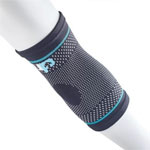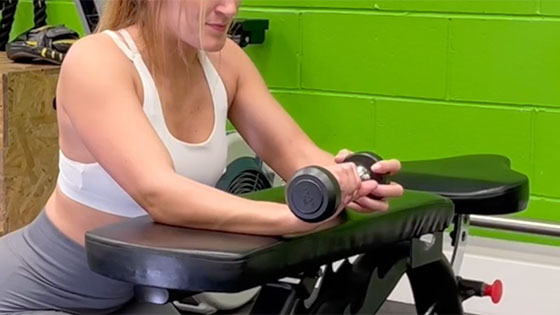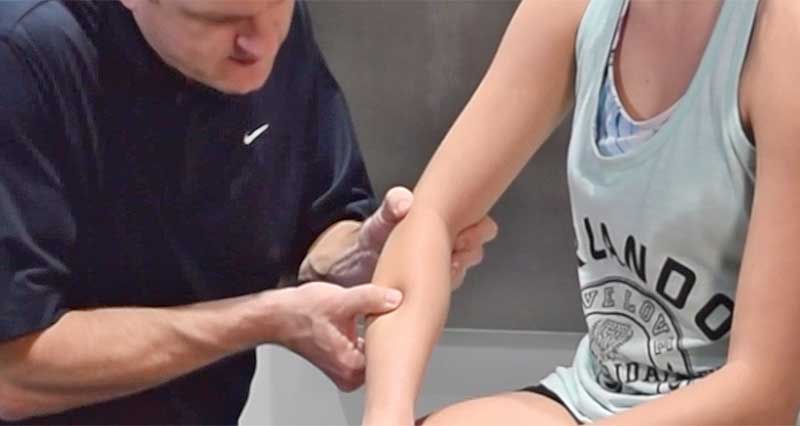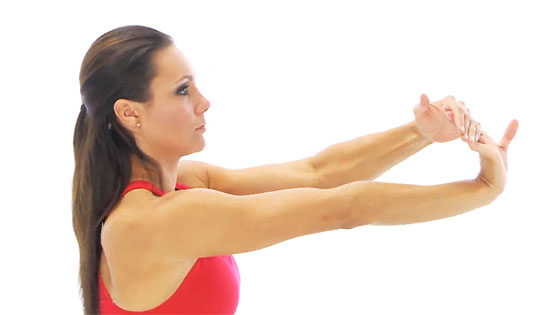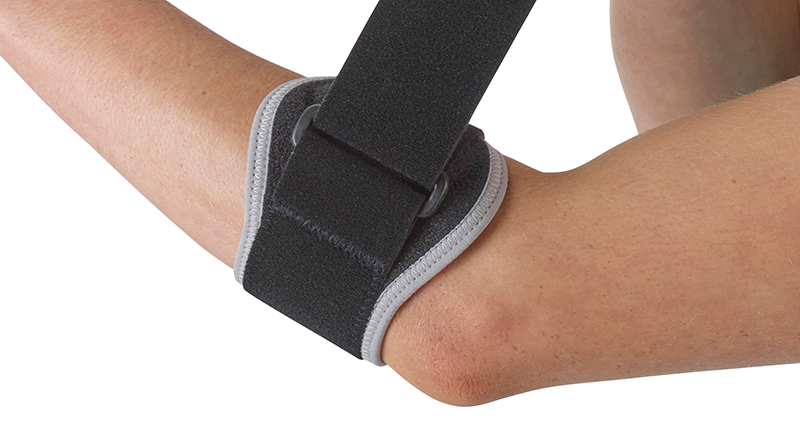After an elbow or wrist injury, rehabilitation exercises should be performed, but only as soon as pain allows. Here we explain exercises to improve mobility and strengthen the muscles in the wrist and elbow.
Wrist strengthening exercises
After a wrist or hand injury, rehabilitation exercises should be performed as soon as pain allows. These exercises strengthen the muscles in the wrist, hand, and forearm which can help the injury heal and prevent further injuries. They also improve the range of motion of the wrist and hand which can make the area less prone to injury.
These exercises can be used for the rehabilitation of specific injuries such as Carpal Tunnel Syndrome.
Assisted Supinator Stretch
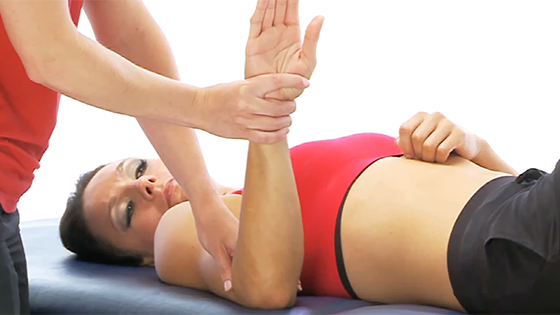
This stretch requires the help of a partner or therapist to stretch the muscles which supinate the wrist (turn the hand over). This stretch also targets the biceps brachii and brachioradialislay.
The patient is in a relaxed position with the upper arm supported. The therapist fully pronates the hand (so the palm faces down) to stretch and lengthen the supinator muscles.
A mild stretch may be felt in the wrist and forearm. This position can be held for up to a minute, provided it does not cause pain. Doing this exercise with the elbow bent reduces the stretch on the Biceps muscle to focus on the supinator.
Putty exercises (various)
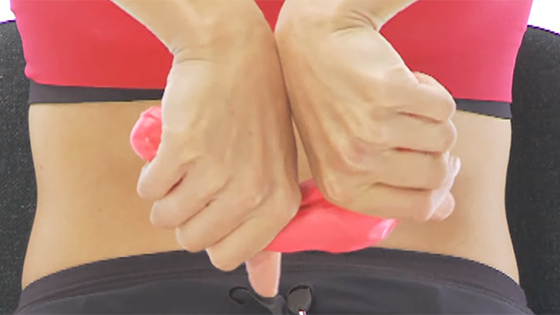
Putty can be used to strengthen the small muscles of the wrist and hand. This is useful after injuries such as a fracture to any of the small bones in the hand or a wrist, thumb or finger sprain.
It can be gripped in both hands and pulled apart to work on wrist deviation strength, or held in one hand and twisted with the other to work on wrist extension It can also be squeezed to improve grip strength.
The muscles worked depend on the exact exercise, but generally, the intrinsic muscles of the hand are worked to grip it and then the forearm muscles control wrist extension, flexion, radial, and ulna deviation.
Prolonged Wrist Stretches
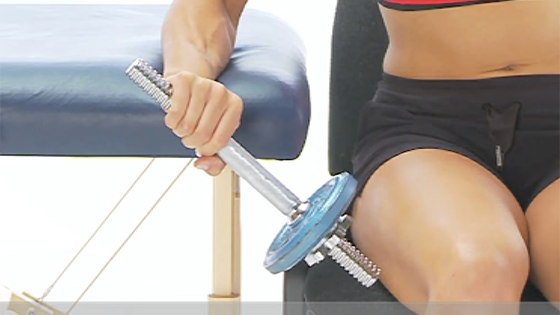
This exercise aims to increase the range of motion into pronation and supination.
Pronation is the movement of turning the hand so the palm faces downwards. Supination is the opposite movement so the palm ends facing upwards.
Ulna & Radial Deviation
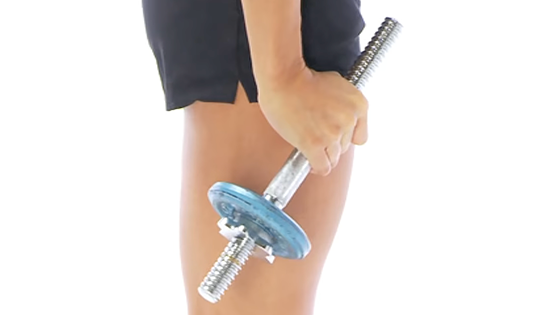
Ulna and radial deviation are the movements of tilting the wrist from one side to the other. Radial deviation is moving the thumb side of the hand down towards the wrist and ulna deviation is moving the little finger side down.
To work on ulna deviation, the athlete holds a weighted bar in the hand with the arm by their side so that the palm faces inwards and the weight is at the back, as shown.
The athlete then tilts the wrist so that the little finger moves upwards. To work radial deviation, the arm stays in the same position but the weight is moved to be in front of the hand. The wrist is then pulled up so that the thumb moves towards the wrist.
Wrist Flexion
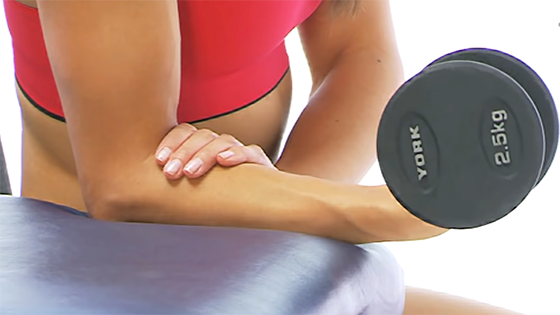
This wrist flexion exercise can be performed with a dumbbell as shown, or with a resistance band. It is great for strengthening the wrist flexor muscles of the forearm after wrist and elbow injuries.
To strengthen the muscles which flex the wrist, the athlete sits with the forearm supported and palm facing upwards.
Starting with the wrist bent downwards and a small weight in the hand, the athlete pulls the wrist upwards, keeping the forearm flat on the table. They then slowly reverse this movement.
Alternative Exercises:
- Resistance band wrist flexion
Wrist Extension
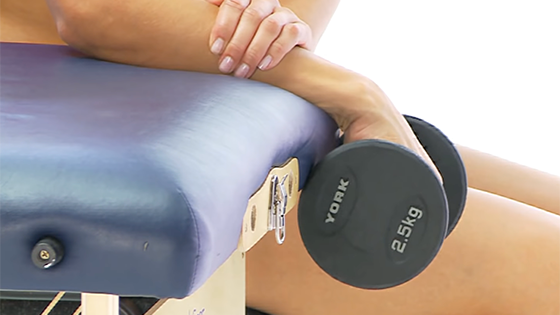
Wrist extension exercises are rarely used in weight training programmes, although it is a great exercise for the rehabilitation of injuries such as tennis elbow and sprains/fractures of the wrist.
Support the arm on a bench or table as shown, with the palm facing downwards. Pull the wrist back so that the dumbbell moves towards the body. Slowly return to that starting position.
Variations
- Perform whilst kneeling with the forearm resting on a bench in front of you.
Finger Exercises with Rubber Band
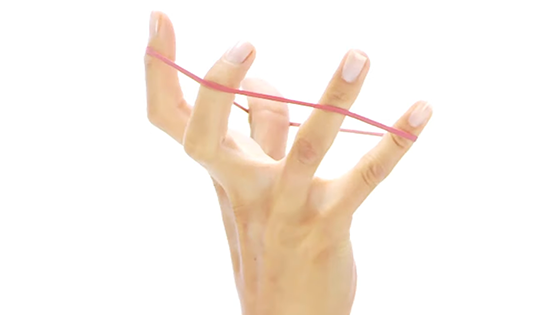
Rubberband exercises are a great way for strengthening the finger extensors and are commonly used in treating tennis elbow injuries as the same muscles causing pain at the elbow, also control finger extension.
This exercise targets the extensor digitorum communis, and the extensor pollicis longus.
A rubber band is placed around the fingers and thumb. The athlete spreads the fingers apart as far as possible. This can be done on all fingers at once or between two individual fingers.
Wrist stretching exercises
Some wrist stretching exercises can be performed as part of a rehabilitation programme after recovering from an injury.
Active Supinator Elbow Stretch
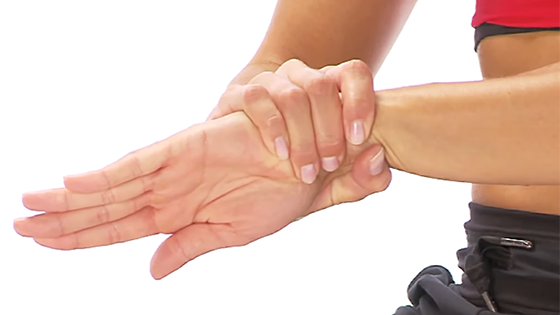
This supinator stretch works to increase the amount of pronation (turning the palm down) by stretching tight supinator muscles which restrict this movement. To increase pronation, where the palm of the hand faces downwards, the athlete uses the other hand to assist in increasing this motion.
With an overhand grip on the wrist, the athlete uses the fingers to pull upwards on the outer wrist, as the base of the hand pushes downwards on the inner wrist. This position can be held for up to a minute, provided it is not painful.
Active Pronator Elbow Stretch
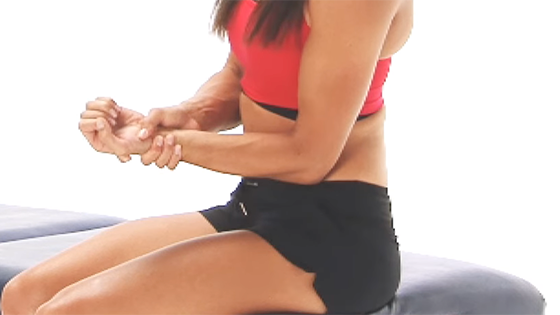
Pronator stretches work on increasing the flexibility of the pronator muscles in order to increase the range of supination available at the wrist/forearm. This stretch targets the pronator teres and pronator quadratus. To increase supination, where the palm faces upwards, the athlete uses the other hand to assist in increasing this motion.
With an underhand grip on the wrist, the athlete uses the fingers to pull the thumb side of the wrist downwards and pushes the other side upwards with the palm of the hand. This can be held for 20-30 seconds and repeated several times.
Assisted Biceps Stretch
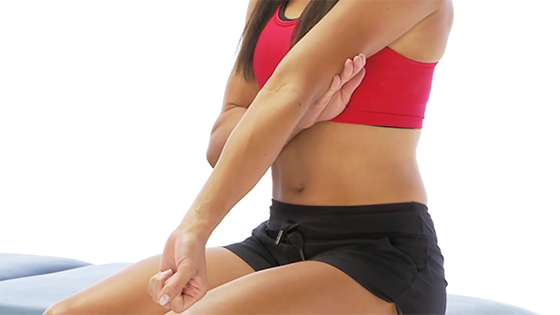
The assisted biceps stretch is used to increase elbow extension with the assistance of a therapist.
The athlete is positioned lying on their back whilst the therapist supports the elbow. The therapist then straightens the elbow and moves the shoulder into extension until a stretch is felt.
Assisted Forearm Stretches
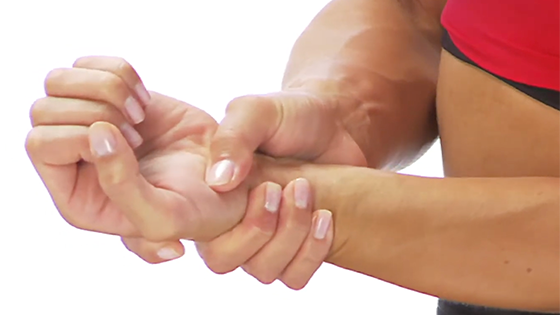
This exercise can be used to increase the rotation at the wrist, also known as supination. The patient uses overpressure on the other hand to increase the stretch.
The elbow is bent and the patient grips the wrist with one hand. The patient turns the palm of the hand upwards and then applies a rotation force on the wrist as far as possible. Hold for 10 seconds, and then rotate the other way.

